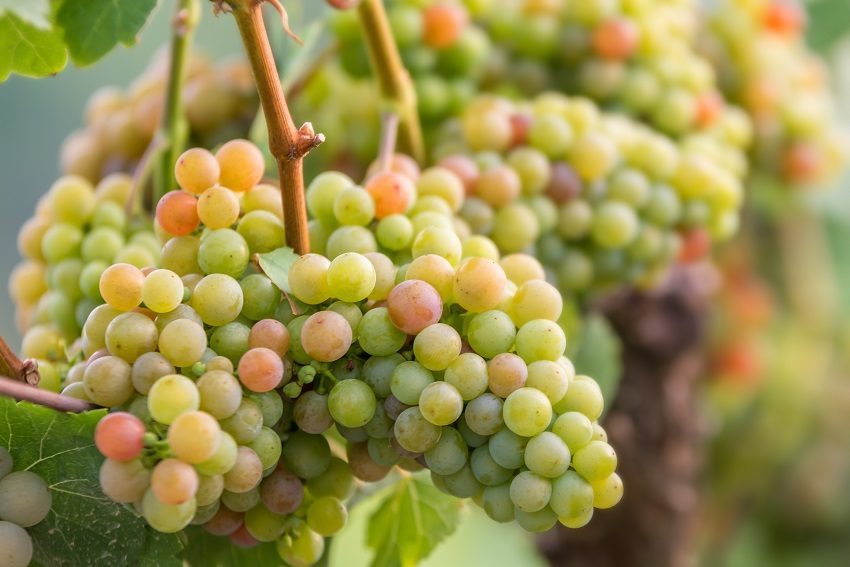Savagnin goes yellow, weird and wonderful

Geographically speaking, the Jura is one of France’s more edgy departments – its famous mountain range is shared with Switzerland – so it seems only fitting that the region is home to one of the world’s more eccentric wines.
Made from the white grape Savagnin, the Jura’s vin jaune (yellow wine) is so-called because of its deep colour, the result of a process that sees the wine matured in barrel under a woolly blanket of yeast mould for three to five years before it is bottled.
The resemblance to the techniques of traditional flor sherry-making is pronounced, although there is a crucial difference – vin jaune is not fortified. Not surprisingly though, its flavour profile shows some marked similarities to sherry, tending towards nutty and aldehyde characters, which become increasingly pungent and concentrated the longer the wine spends under its yeast voile, or veil.
Vin jaune is the model and inspiration for McLaren Vale winemaker Kevin O’Brien’s Kangarilla Road 2015 The Veil Savagnin Blanc, Hot 100 Wines’ runner-up. O’Brien is the first to admit that his creation can create a degree of perplexity – and even alarm – among tasters at cellar door, so much so that he has been idly tempted to install a GoPro to record their reactions. O’Brien says that for the many young drinkers who have no acquaintance with sherry or Apera (as the Australian-made version is now known), the smell and taste of the wine is entirely outside their experience.
“We do make an effort to warn people,” O’Brien says, “but even so, the expressions can be quite hilarious.”

The wine’s constituent grape, Savagnin, is a variety that made its entry into numerous Australian vineyards not by deliberate choice, but by an unfortunate case of mistaken identity. A group of enterprising Australian winemakers who thought that they had imported the noble white grape of Rioja, Albarino, discovered in 2009 that their vines were actually Savagnin, a variant of the much less glamorous variety Traminer.
Despite the production of several vintages of critically acclaimed Savagnin-based wines by numerous wineries, the variety lost ground in the wake of the mix-up’s discovery. O’Brien says he was casting around for something to do with his back-log of bulk Savagnin when he happened upon several French vins jaune made both from Savagnin and Chardonnay being poured in Melbourne wine bars.
“I was blown away by them: real pigeon-hole sort of wines, and didn’t appeal to everybody, but I found them quite intriguing, along those sort of fino sherry lines, and I thought, ‘Well, here’s an idea’.”
O’Brien initially tried to grow his own flor mould on gel, using a strain provided by the Australian Wine Research Institute. “But I kept on killing it,” he says. Eventually, using a mould generously provided by Seppeltsfield winemaker Warren Randall, O’Brien seeded “a few hogsheads” of Savagnin to kick off his own take on vin jaune.
The Veil doesn’t go the whole hog in terms of time in the barrel. Rather than the minimum of three years prescribed by the Jura’s practices, O’Brien opts for around 12 months, allowing the retention of some fruit freshness and varietal character to make it more approachable.
“When we did ours, I thought ‘Let’s try to have some cues in the aromatic and flavour profile to wines that most people would understand’, so the time on flor relative to the Jura style is quite short.”
While quantities remain small, the ongoing experiment has proved surprisingly successful, O’Brien says. “We find for those who are adventurous and well-versed in wine, generally the response is very good and positive.”
It certainly caught the attention of the Hot 100 judges, who called it “a complex and layered wine” and dubbed it “the ultimate aperitif”.
While Savagnin is making an exit from the Kangarilla Road repertoire, vin jaune will continue with Chardonnay, and looks set to become even more authentic. In the Jura, the wine loses around 40 per cent of its volume during its long maturation, and O’Brien is now looking to extend the time in barrel for his own wine to gradually increase its concentration. O’Brien’s son Charlie has even taken it upon himself to trial a red version using Primitivo, aka Zinfandel.
Now, what do red and yellow make?